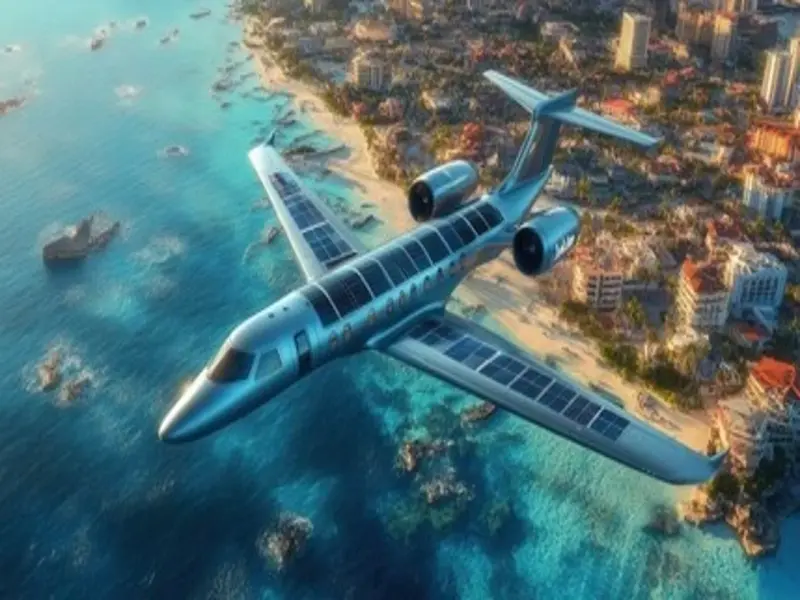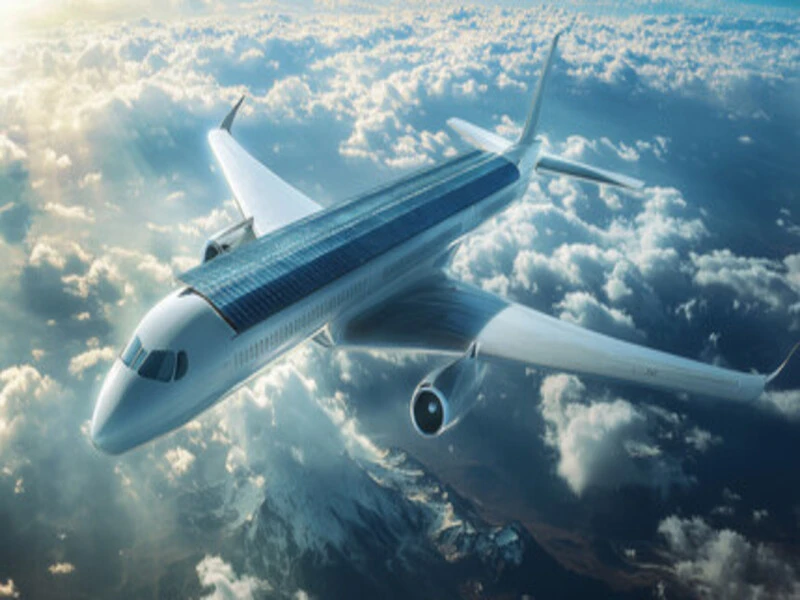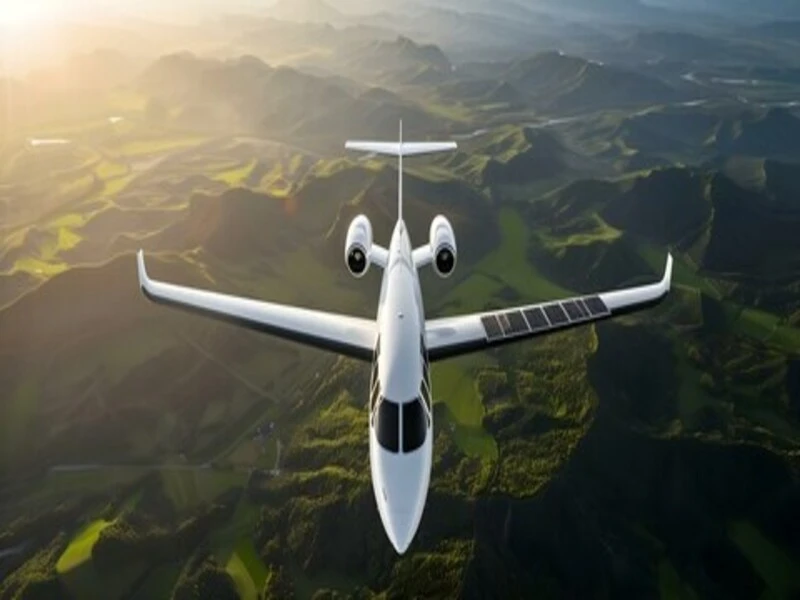The global aviation industry is undergoing a seismic shift driven by the increasing demand for sustainable and eco-friendly technologies. The China Aerospace Science and Technology Corp Solar Airplane is among the frontrunners in this transformation. This pioneering innovation blends cutting-edge aerospace engineering with renewable energy to redefine flight possibilities. Here, we delve into this groundbreaking aircraft’s evolution, features, applications, and challenges, offering an in-depth perspective on its transformative potential.
What Is the China Aerospace Science and Technology Corp Solar Airplane?
At its core, the China Aerospace Science and Technology Corp Solar Airplane is a marvel of modern engineering. This aircraft, designed by the China Aerospace Science and Technology Corporation (CASC), relies entirely on solar power. Unlike traditional airplanes dependent on fossil fuels, it utilizes advanced photovoltaic panels strategically mounted on its wings and fuselage. These panels efficiently convert sunlight into electrical energy, powering the aircraft’s flight systems.

The Solar Airplane can operate for prolonged periods without refueling, thanks to its energy-efficient design and lightweight materials. This engineering feat demonstrates CASC’s leadership in aerospace innovation and sets a new benchmark for sustainable aviation solutions.
The Development Journey of the Solar Airplane
CASC initiated this ambitious project to tackle the growing environmental concerns associated with conventional aviation. While solar-powered flight is not entirely new, the Solar Airplane embodies a leap forward regarding endurance, altitude capabilities, and efficiency.
The journey began with rigorous research and development, focusing on integrating high-performance photovoltaic cells capable of harnessing maximum sunlight. These cells, coupled with lightweight materials like carbon fiber composites, ensure the airplane achieves high energy efficiency without compromising structural integrity. The aircraft’s ability to remain airborne for days or weeks underscores its revolutionary design.
Key Features of the China Aerospace Science and Technology Corp Solar Airplane
- Advanced Solar-Powered Energy System: The Solar Airplane boasts a sophisticated solar energy system, with high-performance photovoltaic panels meticulously installed for optimal sunlight absorption. These panels power electric motors and onboard systems, making the aircraft entirely emission-free.
- Extended Flight Duration; The Solar Aeroplane relies solely on renewable energy and achieves unmatched flight durations, staying aloft for days or weeks. This makes it an ideal choice for long-duration missions, eliminating the need for frequent refueling.
- Lightweight and Durable Materials: The aircraft employs advanced materials like carbon fiber composites, reducing its overall weight while enhancing endurance and flight stability.
- Eco-Friendly Design: With zero reliance on fossil fuels, the Solar Airplane aligns with global efforts to reduce greenhouse gas emissions, making it a key player in transitioning to a sustainable aviation industry.
Applications of the Solar Airplane

The versatility of the China Aerospace Science and Technology Corp Solar Airplane opens the door to a wide range of applications:
- Environmental Monitoring and Research: With its extended flight capabilities, the Solar Airplane is perfect for monitoring deforestation, observing marine ecosystems, and conducting atmospheric research.
- Military and Surveillance Operations: The aircraft’s long endurance and quiet operation make it invaluable for reconnaissance missions, border monitoring, and real-time intelligence gathering.
- Disaster Relief and Humanitarian Aid: In regions affected by natural disasters, the Solar Airplane can deliver critical supplies, conduct aerial surveys, and establish communication networks, all without relying on conventional fuel infrastructure.
Challenges in Solar Aviation
While the Solar Airplane is a remarkable achievement, the field of solar aviation still faces significant challenges:
- Efficiency of Solar Panels: Current photovoltaic technology has limitations in energy conversion rates, affecting payload capacity and range.
- Weather Dependency: Adverse weather, including heavy clouds and rain, can impact the efficiency of solar panels.
- Energy Storage: Storing surplus energy for nighttime or low-light operations remains a technical hurdle.
Comparisons to Other Solar Airplanes
Although several countries have ventured into solar-powered aviation, the China Aerospace Science and Technology Corp Solar Airplane stands out due to its combination of endurance, altitude capability, and versatility. This unique approach positions it as a global leader in sustainable flight technology.
Future Prospects for Solar Aviation
The successful development of the Solar Airplane signals a new era for aerospace innovation. As advancements in solar technology, materials science, and energy storage continue, the limitations currently faced by solar-powered aircraft are expected to diminish.
In the long run, solar aviation has the potential to redefine not only commercial air travel but also military, scientific, and humanitarian operations. The transition to solar-powered flight aligns perfectly with global efforts to combat climate change and reduce carbon emissions, making it a pivotal element in the future of eco-friendly aviation.
In Conclusion
The China Aerospace Science and Technology Corp Solar Airplane is a testament to human ingenuity and the potential of renewable energy in modern aviation. It addresses the aviation industry’s pressing environmental challenges while paving the way for long-duration, sustainable missions in a variety of sectors.
By championing innovations like the Solar Airplane, the world takes a critical step toward achieving a more sustainable and eco-conscious future for air travel. As technology evolves, the possibilities for solar-powered flight are boundless, heralding a brighter and greener era in aviation history. As we explore groundbreaking advancements in sustainability, such as solar-powered aviation, it’s worth noting how platforms like FintechZoom.com European Indices Today provide critical insights into economic trends that influence technological growth.
FAQs
What is the China Aerospace Science and Technology Corp Solar Airplane?
The China Aerospace Science and Technology Corp Solar Airplane is a solar-powered aircraft developed by CASC, utilizing advanced photovoltaic panels to convert sunlight into electrical energy. It operates emission-free and can stay airborne for extended durations without refueling.
How does the Solar Airplane work?
The Solar Airplane harnesses solar energy through high-performance photovoltaic panels installed on its wings and fuselage. These panels convert sunlight into electricity, which powers the aircraft’s motors and onboard systems.
What materials are used in the construction of the Solar Airplane?
The airplane is constructed using lightweight and durable materials like carbon fiber composites. These materials reduce the aircraft’s weight, improving energy efficiency and flight endurance.
What are the primary applications of the Solar Airplane?
The Solar Airplane serves a variety of purposes, including:
- Environmental monitoring and research
- Military reconnaissance and surveillance
- Disaster relief and humanitarian aid
How long can the Solar Airplane remain in flight?
Thanks to its reliance on solar energy, the Solar Airplane can stay aloft for several days to weeks, making it ideal for long-duration missions.
Is the Solar Airplane environmentally friendly?
Yes, the Solar Airplane is entirely emission-free, as it operates on renewable solar energy, contributing significantly to reducing aviation’s environmental footprint.
What challenges does solar aviation face?
Key challenges include:
- Limited energy conversion efficiency of current photovoltaic panels
- Weather dependency affecting solar panel performance in low-light conditions
- The need for advanced energy storage systems to support nighttime operations
How does this Solar Airplane compare to others?
The China Aerospace Science and Technology Corp Solar Airplane stands out for its endurance, altitude capabilities, and versatility, positioning it as a leader in sustainable aviation solutions.
What advancements are expected in solar aviation?
Future advancements include improved solar panel efficiency, better energy storage systems, and next-generation lightweight materials, which will enable more extensive and more efficient solar-powered aircraft.
What impact will solar-powered aviation have on the environment?
Solar-powered aviation has the potential to significantly reduce greenhouse gas emissions and minimize the aviation industry’s environmental footprint, aligning with global efforts to combat climate change.
Can the Solar Airplane be used for commercial purposes?
While the current design focuses on research, surveillance, and humanitarian applications, advancements in solar aviation technology may eventually lead to commercial applications.
What makes the China Aerospace Science and Technology Corp Solar Airplane unique?
This Solar Airplane combines state-of-the-art technology, extended flight duration, and a focus on sustainability, making it a groundbreaking innovation in aerospace engineering.
How does the Solar Airplane address global challenges?
The Solar Airplane helps mitigate aviation’s environmental impact by reducing dependency on fossil fuels. It also supports critical missions like disaster relief and environmental monitoring, innovatively addressing global challenges.
Is solar-powered aviation the future of flight?
Solar-powered aviation represents a promising future for sustainable flight. As technology evolves, solar-powered aircraft are expected to play an increasingly important role in commercial and specialized aviation sectors.
What is the ultimate goal of the China Aerospace Science and Technology Corp Solar Airplane?
The ultimate goal is to demonstrate the feasibility of sustainable aviation solutions, reduce the aviation industry’s reliance on fossil fuels, and pave the way for a greener, eco-friendly future.
